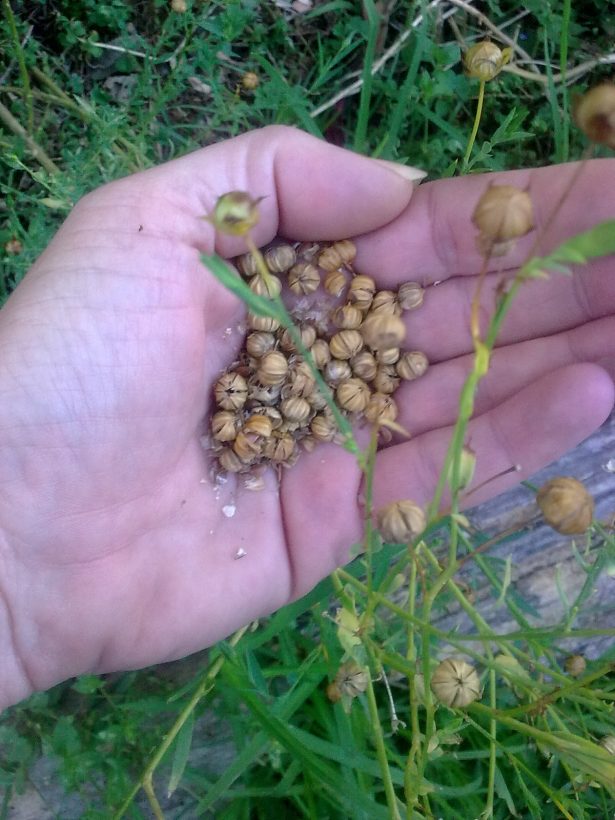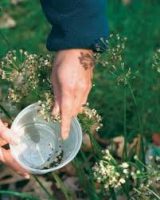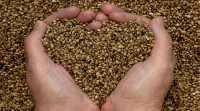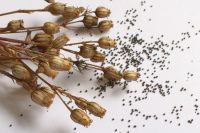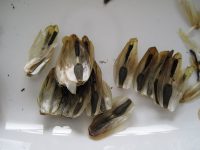Seed Collecting
Presented by
Fort Bragg Seed Library
October 27, 2017
3:30-4:30 pm
Sowing, collecting and sharing seeds can be a gratifying experience for the amateur gardener, however, the first time you think about collecting your matured seed can seem daunting. That’s why the Fort Bragg Seed Library is presenting a workshop on Seed Collecting, Friday, October 27, 2017, from 3:30-4:30.
 At the Seed Collecting workshop, Carole, our Fort Bragg Seed Library manager, will show you what to look for and how to collect seed from your mature plants. You can bring your own ready to harvest pods or use some of ours. This is a hands on workshop. We’ll provide the tools and knowledge, you provide the enthusiasm.
At the Seed Collecting workshop, Carole, our Fort Bragg Seed Library manager, will show you what to look for and how to collect seed from your mature plants. You can bring your own ready to harvest pods or use some of ours. This is a hands on workshop. We’ll provide the tools and knowledge, you provide the enthusiasm.
Frequently Asked Questions about Seed Saving (info borrowed from http://theseedsite.co.uk/harvesting.html)
Where are the seeds? ~ The seeds are always where the flowers were, because the seeds grow at the bottom of the style (the bit that sticks up in the middle of the flower). Sometimes, the seed pod forms behind the flower (as in daffodil), but most of the time, the seed pod grows inside the flower at the bottom of the style.
When do I collect the seeds? ~ You cannot collect seeds from dead flowers. The seeds need to mature and then they need to ripen. Think of an apple – you know you can’t eat the little green apples that you see when the flowers have died. It’s the same with other seed containers – they need to grow bigger and mature before they are any good. Seed production is a three-stage process: first, the seeds have to be fertilised, then they have to mature, then they have to ripen. If they haven’t been fertilised, they won’t mature. If they haven’t been fertilised and grown to maturity, they won’t ripen. If they haven’t been fertilised, matured, and ripened, they won’t be viable. Sometimes, it takes weeks or even months from the time the flower dies to when the seeds are ready.
How do I tell if they’re ripe? ~ When the seeds are ripe, nature will disperse them. If you want to collect them yourself, you need to wait until just before they would be dispersed naturally, because you know that they will be ripe then. The seed pod will become dry and will usually change colour, probably from green to brown or white, and the seeds inside will change from green or white to brown or black. Think of the apple again – the seeds inside an unripe apple are white. When the apple is ripe, it changes colour and the seeds inside become brown.
How do I know if seeds are viable? ~ Viable seeds are healthy seeds. Often, they look healthy – they’re shiny, fat, heavy and tough (all relative to the weight and size of a seed). Sometimes, they aren’t all those things, but a good seed – even a flat one like a lily – will still have a bit of ‘body’ where the embryo is, or be too strong to squash or cut with a finger nail.
What’s a Float Test? ~ There’s a theory that seeds float if they’re no good, and good seeds sink. That might apply to the seeds of a particular type, but it isn’t a good rule to follow. Seeds will float if they’re lighter than water and sink if they’re heavier than water. Some seeds will germinate while floating (apparently, you can germinate some lily seeds this way), and some seeds will float until you make a hole in their seed coat, and then they’ll sink.
What are Open-Pollinated Seeds? ~ Left to the bees and other natural pollinators, plants produce seeds that are the result of pollination with any other compatible plants in the area. Open-pollinated seeds are what you get naturally. Seeds saved from open-pollinated plants will give you more or less the same mixture of colours, sizes or heights as the original plants.
What are Hybrids? ~ Hybrids are plants with mixed parentage. They’re plants with a large number of genes for different things (colour, height, size of flowers) in them, so you get a mixture of colours, heights and flower size from their seeds. If seed growers have selected one thing, such as colour, and grown only the plants that have flowers with that colour, and collected seeds from only that colour, and done that for several generations of plants, you’ll end up with plants that have mostly that colour flowers. But they will still have a few genes for other colours, and if they are grown near other plants of the same type with other colour flowers, they will cross-fertilise and the seeds will have genes for all the colours, and will produce plants with different colours.
What are F1 Hybrids? ~ F1 Hybrids are seeds of two particular plants that growers have cross-pollinated. They are the first generation of plants produced from the cross, and can only be produced by crossing the two particular parent plants again. Seed saved from F1 plants will not produce the F1 hybrid. They are then open-pollinated.
Can I grow Heirloom plants? ~ Heirloom varieties are usually vegetables that have been grown in isolation in a particular area, and have been selected over generations (of people and plants) to produce the best crop in that area, because they have been shown to grow best in whatever the local conditions are. If you grow heirloom varieties somewhere else, they may not do as well as in their original location. You will also need to prevent them cross-pollinating with other compatible varieties, or they will not remain true to type.
If my Cucumbers and Melons cross, will I get bitter fruit? ~ While it’s possible that some varieties of melons and cucumbers might cross, the difference would only be apparent in the next generation. The fruit of the melon will still be a melon, and the fruit of the cucumber will still be a cucumber. One reason you might get bitter-tasting cucumbers is if the flowers have been pollinated. That’s why you should remove the male flowers from your cucumber plants.
Why has the seed from my white flowers produced blue flowers? ~ White flowers are often only a deformed type of a flower that is normally blue. The plant therefore carries the blue genes (blue ‘runs in the family’), so the offspring will often go back to being blue.
 Fort Bragg Library Mendocino County, California
Fort Bragg Library Mendocino County, California

